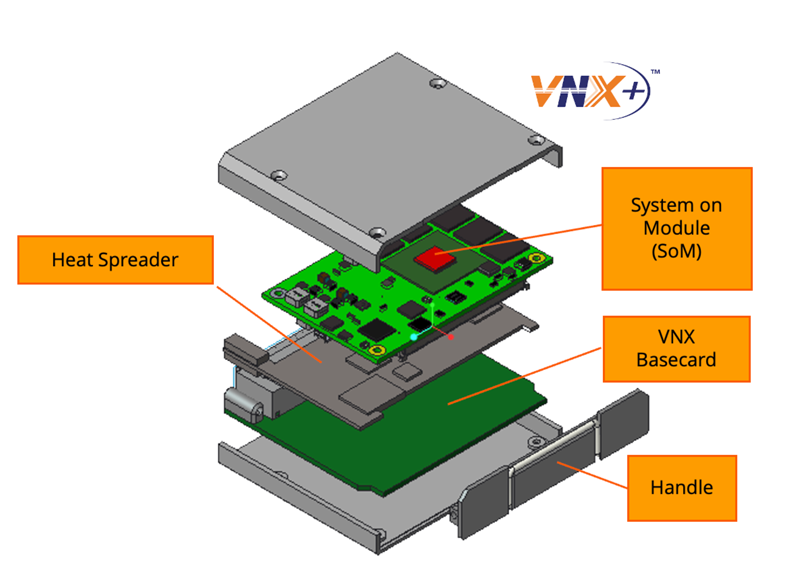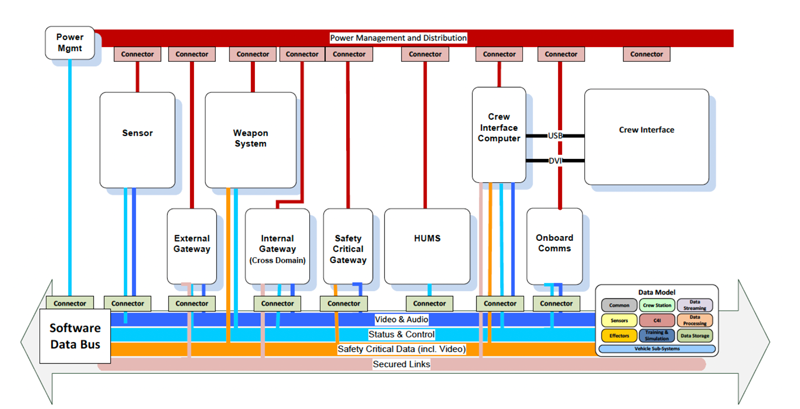Future-Proof Electronic Warfare and SIGINT Systems with OpenVPX and VNX-Based Computing Systems
By Flemming Christensen, Founder & CEO, Sundance Multiprocessor Technology
Strong electronic warfare (EW) and signals intelligence (SIGINT) are critical in modern combat environments. But with a constant stream of new commercial technologies being introduced to defense systems, legacy hardware can’t always keep pace with the rate of change.
The traditional static architecture no longer provides the flexibility required to meet the demands of current usage. It is only by making use of technical trends such as modularization, FPGA reconfiguration, software-defined backplane, and real-time and AI data processing that systems can evolve to match the fast-moving progress of modern defense systems.
Challenges of modern SIGINT systems
Modern AI, and edge AI especially, have changed the nature of the threat landscape by moving the processing closer to where it is used. The increase in real-time AI inference and data fusion requires higher computing power and low-latency data fusion — placing new demands on both hardware and software. Plus, quantum-resistant security is necessary to protect against both existing and emerging cyber threats.
Any hardware system must therefore offer sufficient flexibility and modularity for different mission profiles along with robust protection against environmental influences. Complicating matters, these systems must maintain SWaP optimization while also meeting the demands of interoperability and system upgrades.
OpenVPX & VNX (VITA 74) meet growing demands for ultra-compact embedded solutions.
OpenVPX offers the modularity, interchangeability, and performance needed for SIGINT-based systems (VITA 65.x) to meet these modern challenges. The OpenVPX software-defined backplane (VITA 67.3) allows reconfiguring the signal paths without having to rewire the hardware. It also enables “I/O as a service” functions such as CXL3.0 (Compute Express Link), TSN (Time-Sensitive Networking), or VITA Radio Transport.
The extended air-flow-through cooling of the backplane allows for improved thermal dissipation, which is essential for modern AI workloads. It also offers both the larger 6U and more compact 3U form factors, as well as the ability to mix and match modules and other technology between the two. Sundance and longtime business partner Etion Create support a range of OpenVPX architectures.
VNX (VITA 74) was introduced to complement OpenVPX with energy-saving, yet powerful platforms. This standard supports very compact, lightweight solutions for uncrewed aerial vehicles (UAVs), uncrewed ground vehicles (UGVs), mobile SIGINT systems, and other portable solutions. VNX supports multiple connection options for OpenVPX systems while meeting performance, modularity, and interface diversity demands for SWaP-critical applications. And VNX supports PCIe Gen4 interconnects, 100 GbE networking, and expanded I/O channels that enable high-bandwidth and low-latency data transfer.
OpenVPX and VNX: The best of both worlds
The choice between OpenVPX and VNX depends on the application’s immediate requirements. OpenVPX provides options for better compute power and higher I/O throughput, whereas VNX is more suited to designs that are size- or weight-constrained. But it doesn’t need to be an either-or choice. It is possible to combine both architectures to derive the best of both. Since the OpenVPX enclosure provides dedicated VNX slots, it’s possible to do this internally, or it can be achieved via an external connection such as PCIe or Ethernet.
Bridging the gap between compact VNX+ 19mm 400-pin SBCIO PIM modules and widely deployed OpenVPX SOSA-aligned systems, Sundance’s high-performance VNX+ to 3U VPX Adapter exemplifies this approach. The Sundance adapter allows embedded designers and integrators to leverage existing VPX infrastructure while tapping into the growing ecosystem of VNX+ modules. It also provides board manufacturers with a clear path to develop next-generation VNX+ .

VNX+ (VITA 90): high performance with focus on edge processing
VNX+ is the next generation of VNX systems. As such, it expands on the original standard by enhancing performance, supporting higher power capacities, and providing new connectors.
Plus, VNX+ delivers OpenVPX performance in roughly the same small form-factor as VNX, balancing SWaP-optimization with high-performance. It also supports increased power (up to 50W) and throughput (up to 10Gbps) with better cooling, making VNX+ well-suited for UAVs and UGVs with mobile sensor technology.
[Sidebar 1 | 4U or not 4U? That is the question.]
For more than forty years, open standards backplane-based systems like VME, CompactPCI, VPX, OpenVPX, and others have been designed to 3U and 6U system architectures. Recently, however, 4U OpenVPX (VITA 100) chassis concepts have emerged, promising to deliver the extra footprint needed for applications with increased thermal requirements and management while retaining a more compact form factor than 6U frames. In theory, these 4U designs blend the size, power, and performance needed for use cases like military drones.
In practice, however, market headwinds make this approach potentially dangerous. For example, there are more than forty years of legacy 3U and 6U CompactPCI, VME, and CPX installations deployed in the field today. When moving to a 4U design, those systems — and any viable infrastructure — would need to be abandoned, an unattractive option at best.
It’s no wonder that system designers hesitate to adopt a modified or non-standard architecture that is supported by fewer companies than a conventional standard. These points alone warrant giving 4U designs a second thought. Fortunately, viable alternatives can be found in 3U boards and modules from vendors like Sundance and Etion Create.
Software-defined systems: The key to future-proofing
Abstracting software from hardware permits systems to adapt quickly to new missions, threats, and environments — without the lengthy and costly retrofits. Here, completely modular and reconfigurable software-defined systems (SDS) represent a shift in the design and maintenance of modern systems.
It makes good sense to consider adaptive signal processing platforms. Supporting the deployment of improved AI and machine learning algorithms remotely to in-theater systems, these platforms can evolve in real time to maintain peak performance in changing environments. Furthermore, AI middleware stacks such as TensorFlow Lite for VxWorks also support onboard model training. With systems that can learn and adapt in the field, decision-making and efficiency can be improved without the need for constant remote updates.
Finally, SDS empowers designers, allowing them to push targeted updates to FPGA bitstreams and logic on the fly. Instead of swapping out boards or taking the system offline, designers can send reconfiguration packages directly to the FPGA.
Open modular standards accelerate future-ready system design.
Developing solutions based on modular standards such as OpenVPX, VNX, and VNX+ makes it possible today to meet the growing demands of tomorrow’s intelligent warfare and SIGINT applications. Sundance and Etion Create are among a burgeoning ecosystem of open, modular solution providers that are leveraging OpenVPX, VNX, and VNX+ solutions to allow system designers to scale and adapt with ease.

The Etion Create Cheetah Tactical Router — a modular, ruggedized system designed for vehicles that operate in harsh environments — is one new example. Based on the VNX+ standard, the router is ideal for vehicle applications, providing connectivity for situational awareness, internal and external communications to the vehicle, and Tactical Data Link functions.
While it’s impossible to predict the future, savvy engineers can design flexible systems that rapidly adapt to the requirements of the moment. Now, they have the tools to do so at scale.
Bio: Flemming Christensen is founder and CEO of Sundance Multiprocessor Technology, an ISO9001-2015-certified company that delivers custom-designed embedded products for high-performance robotics, vision, motion, and sensor applications.
2.https://www.sundancedsp.com/sundancedsp-introduces-vnx-to-3u-vpx-adapter-enabling-seamless-integration-of-vnx-modules-into-sosa-aligned-vpx-systems
3. https://www.sundance.com/vf370-saab/
4. https://store.sundance.com/product/cheetah-tactical-router/

